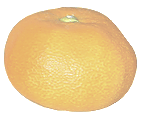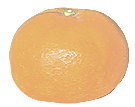Rosenberger then continues:
. . . Okaasan would soon be off to check the bath and call the otoosan to enter. She would help him to prepare for the bath, sit for a moment and then run off in response to his “Oi!” from the bathroom. Next was myself, then the daughter, and finally the mother for a brief bath. . . . While we were tingling from the warmth of the bath, okaasan would bring the teapot and pour us tea, serve sembei (rice crackers) and tangerines. . . She had little time to partake except for a sip of tea now and then. Lulled by all these signs of relaxation, the daughter and I were not long in getting off to bed, with otoosan soon to follow. Sounds of okaasan going out to lock the outer gate and the inner door were usually the last sounds I heard.
This situation would be labeled by Japanese as uchi, because it is an informal family setting. But within this relatively intimate, private situation various interactions take place which also spell out uchi/soto. For example the mother has to be more disciplined in making sure the otoosan has what he needs, and she also has to take stock of the situation, making sure the bath is ready and that everyone (including the daughter and guest) are also comfortable and relaxed. Doing this makes her soto, as an observer and facilitator in the situation. Most of okaasan’s actions in relation to the otoosan are characterized by disciplined action—that is, of a more soto mode. But she also shifts from moments when she is making sure the group is satisfied and using semi-polite language to moments when she is a laughing, eating member of the group and uses the same informal language as everyone else.
Otoosan is the center of attention. He freely expresses his personal feelings and receives all of okaasan ‘s attentions, so he is uchi. The otoosan’s actions toward the mother show spontaneous expression of personal need, as a more uchi mode. The otoosan does not hesitate to make demands on the okaasan, even expecting her to understand his wants nonverbally. But when relating to the daughter, he keeps his personal feelings back, “helping her with her homework in a manner that allows her to appear cute and smart in the process”.
In understanding the okaasan’s role in the situation above, it is important to understand that she sees what she is doing from the vantagepoint of being a part of uchi. From this vantagepoint, in the scenario above, she is doing more than indulging the other members of the family. Through her assistance in the creation of the situation she is also helping to facilitate another important aspect of uchi: its solidarity

















